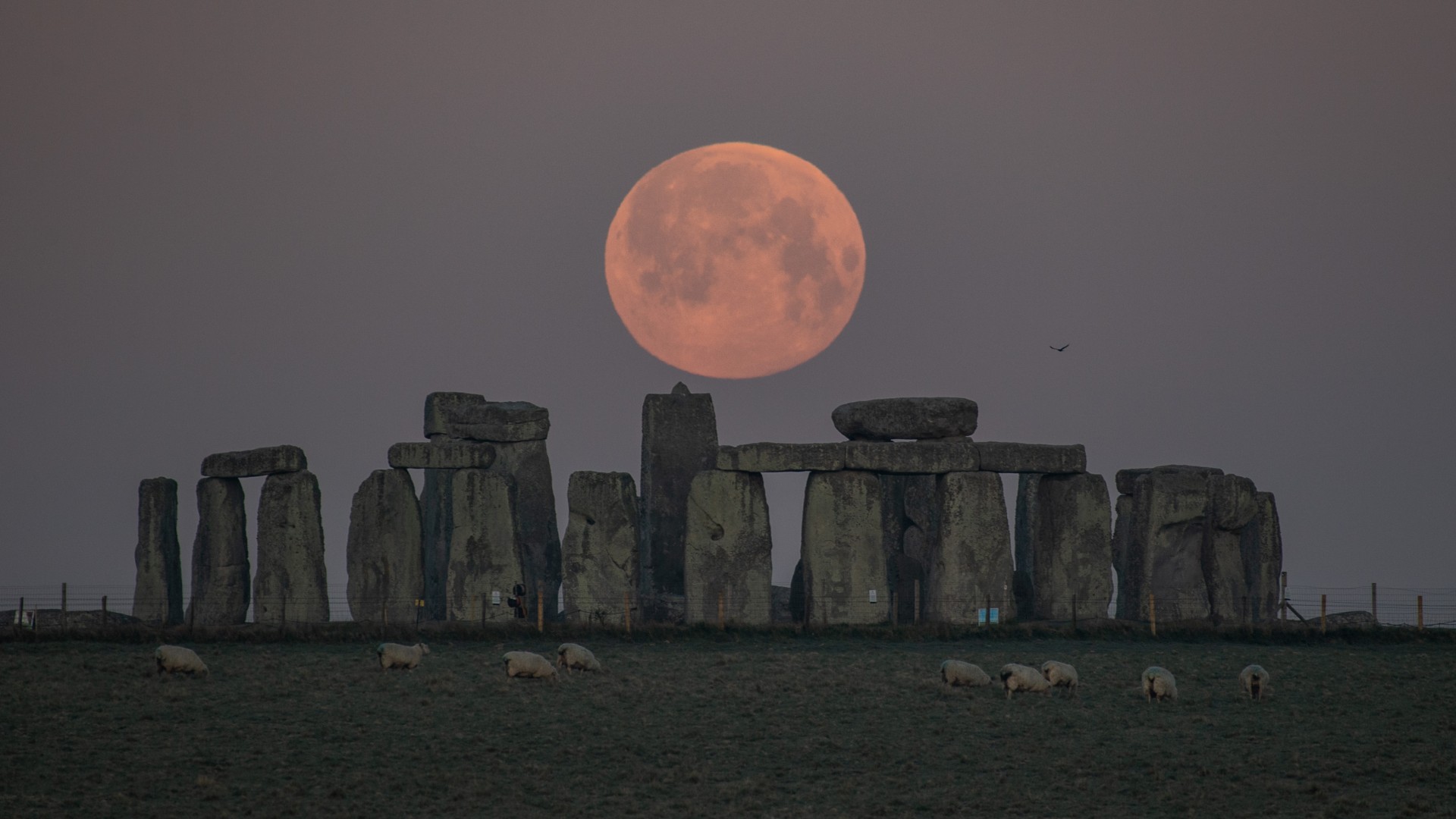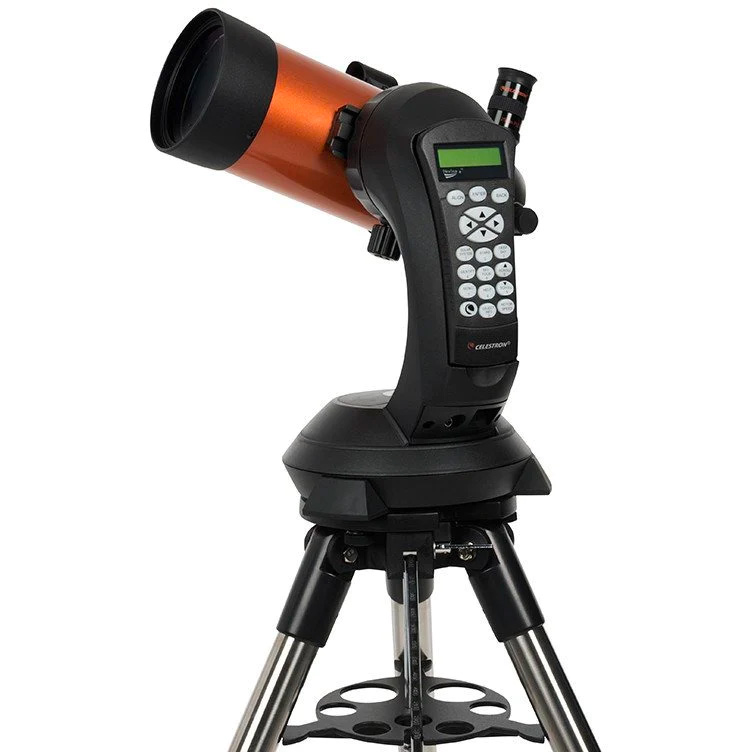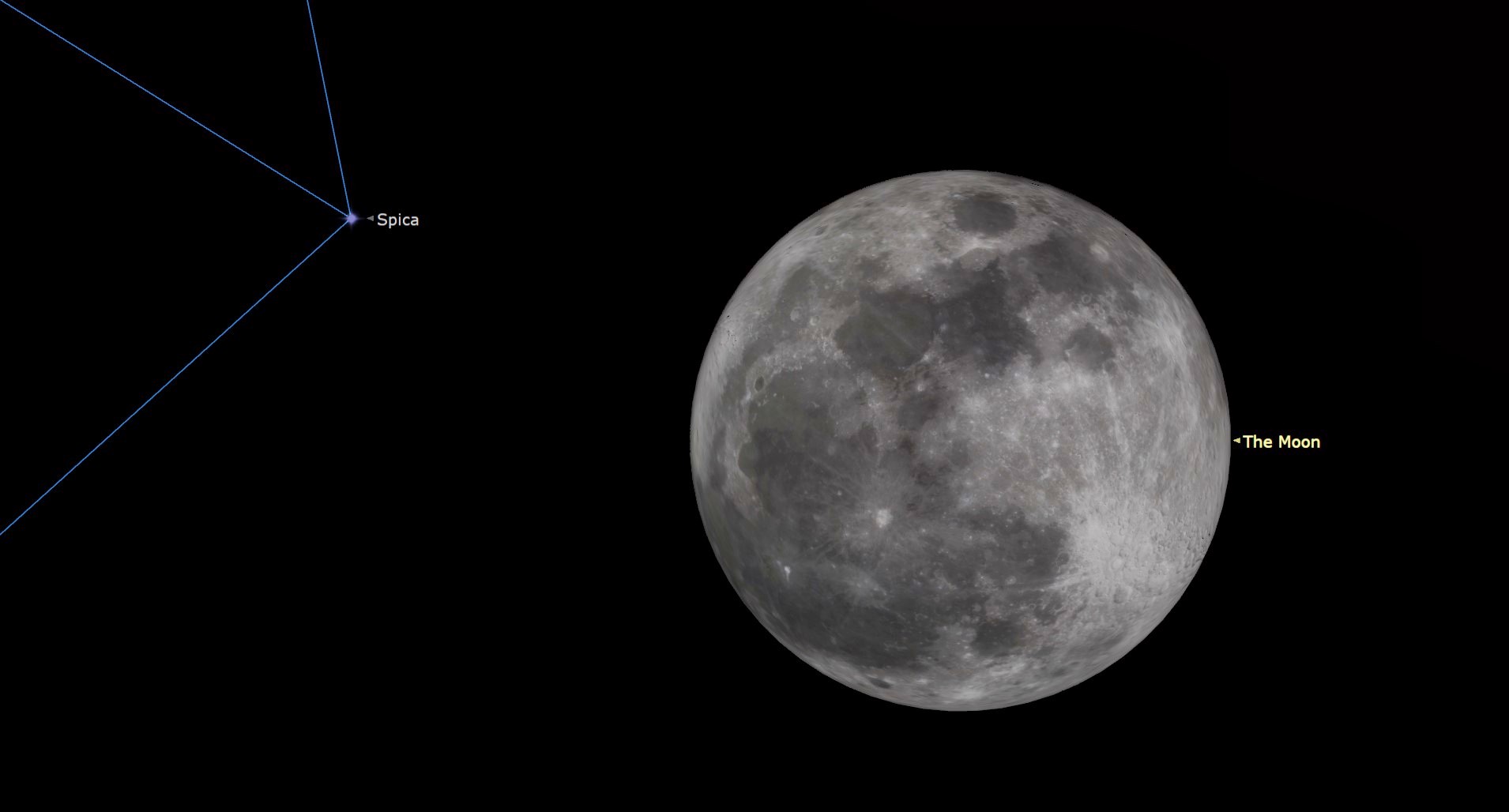April full moon 2025: The Pink Moon hides one of the brightest stars in the sky
The full moon will occult the star Spica in the Virgo constellation this month.

The full moon of April, called the Pink Moon or Paschal Moon, will occur in the eastern U.S. during the evening hours of April 12, at 8:22 p.m. Eastern Time (0022 GMT on April 13). The full moon will occult the star Spica only 28 minutes later for observers in Central America, South America and the southernmost coasts of South Africa.
When the moon is exactly on the opposite side of the Earth from the sun, you have a full moon. Lunar phases are determined by the moon's position relative to the Earth, which means they happen at the same time everywhere, with the hour differing according to one's time zone. Observers in London would see the moon reach full phase at 1:22 a.m. local time; in Los Angeles it will be at 5:22 p.m. local time (before local moonrise).
The occultation of Spica will be observable in Nicaragua, Costa Rica and Panama, where observers will see Spica emerge from behind the moon. In Colombia, Ecuador, Venezuela, northern Chile, Bolivia, Paraguay, French Guiana, Suriname, and British Guyana, Argentina, Brazil and South Africa one will see both the disappearance and reappearance.
Observing from New York City, the moon will rise at 7:30 p.m. Eastern Daylight Time, according to the U.S. Naval Observatory. Sunset that day is at 7:32 p.m. The moon will be in the constellation Virgo but from New York it will appear to make a close pass to Spica; the moon will be at its closest approach while Spica is just below the horizon but as it rises one will see Spica just to the left of the moon.

Looking for a telescope to observe the features of the full moon up close? The Celestron NexStar 4SE is ideal for beginners wanting quality, reliable and quick views of celestial objects. For a more in-depth look at our Celestron NexStar 4SE review.
In Cape Town, South Africa, observers will see the Spica disappear behind the moon at 5:35 a.m. local time on April 13, and reappear at 6:02 a.m. The moon will be some 21 degrees above the western horizon, and Spica will appear to "set" behind the northeastern side of the moon – this will be the upper left side of the disk. When it emerges, it will come out from the lower left side.
Across the Atlantic, in Montevideo, the moon will cover Spica on April 12 at 10:25 p.m. local time. The moon will be 47 degrees high in the northeast, and Spica will tough the upper right (eastern) side. It reappears at 11:20 p.m. local time on the upper left (western) side, and the moon will be 59 degrees above the horizon.
Buenos Aires will see Spica disappear at 10:26 p.m. on April 12, and reappear at 11:12 p.m. Spica will appear to touch the upper right side of the moon which will be 48 degrees high in the northeast, and re-emerge from the upper right.
Breaking space news, the latest updates on rocket launches, skywatching events and more!
In Caracas, the occultation starts at 8:00 p.m. local time April 12, and ends at 8:44 p.m. The moon will be 20 degrees above the eastern horizon at the start, with Spica disappearing on the eastern side, which from Caracas will be near the bottom of the moon's disk. Spica reappears on the northwestern (upper left) quadrant of the disk.
As one moves further north one can only see Spica reappear; in San Jose, Costa Rica, the star emerges from behind the moon at 6:47 p.m.; moonrise is at 5:50 p.m. but the occultation starts before then. Spica will appear from the northwestern (upper left) side of the moon which will only be 15 degrees high in the east.

Hoping to snap a good photo of this full moon? Our guide on how to photograph the moon has some helpful tips. If you're looking for a camera, here's our overview on the best cameras for astrophotography and best lenses for astrophotography. As always, our guides for the best telescopes and best binoculars can help you prepare for the next great skywatching event.
Read more: How to observe the moon with a telescope
April's Full Pink Moon and visible planets
While not everyone will be able to catch the occultation, on the evening of April 12 Jupiter will, for observers in mid-northern latitudes, be in the west; in New York the planet sets at about 12:02 a.m. local time on April 13 and will be easily visible throughout the evening. Mars is much higher in the sky; by about 8 p.m. it is still some 71 degrees above the southwestern horizon and is still prominent as the sky gets darker; the planet is recognizable by its reddish hue.
Venus rises at 4:51 a.m. Eastern in New York on April 13; by sunrise at 6:20 a.m. it is some 16 degrees high in the east. Given that Venus is the third-brightest object in the sky after the sun and moon, an interesting observing exercise is to see how close to sunrise it becomes invisible against the brightening sky; civil twilight starts at 5:51 a.m.; at that time the sky is visibly blue in the east.
For mid-latitude Northern Hemisphere sky watchers Saturn and Mercury will still be mostly lost in the sun's glare. Mercury will emerge in the coming days, but Saturn will remain very hard to observe until later in the spring.
Further south, the sky remains darker as Venus gets above the horizon, because the angle it makes with the horizon as it moves across the sky is steeper. From Miami, for example, Venus rises at 5:20 a.m. and by sunrise at 7:00 a.m it is 22 degrees high; by the time civil twilight starts the planet will be as high above the Miami horizon as it is at sunrise in New York City.
From Miami it is also much easier to try and spot Mercury and Saturn. Saturn rises first at 5:46 a.m. and Mercury follows at 5:51 a.m. By 6:30 a.m. Saturn is 10 degrees high and Mercury is at 9 degrees; the two planets are next to each other with Saturn on the right.

Near the Equator, in cities such as Quito or Singapore, Venus is higher still – in Singapore the planet rises at 5:10 a.m. local time on April 13 and sunrise is not until 7:00 a.m. By 6:00 a.m. Venus is 12 degrees high in the east, with Saturn and Mercury visible below and to the right; Saturn will be higher at eight and a half degrees and Mercury will be at about 7 degrees. By 6:30 a.m. as the sky is getting lighter all three planets will form a visible triangle, with Venus a full 19 degrees above the horizon, with Saturn and Mercury at 16 and 14.5 degrees, respectively.
In the Southern Hemisphere mid-latitudes, the nights are getting longer; in Buenos Aires the sun sets at 6:33 p.m. local time. Observers will see Jupiter low (about 14 degrees high) in the northwest and Mars in the north-northwest about 32 degrees high. Jupiter sets by 9:32 p.m. and Mars at 12:25 a.m. April 13.
Venus and Saturn will be almost even with each other in the sky; in Buenos Aires both planets rise at about 5:02 a.m. local time on April 13; Mercury follows at 5:14 a.m. As April is mid-autumn for the Southern Hemisphere the sun starts to rise later; in Buenos Aires sunrise isn't until 7:15 a.m. By 6:30 a.m., when the sky is starting to get light, Mercury is a full 15 degrees high in the east, with Venus just to the left at 17 degrees and Saturn at the same altitude.
Constellations with the Full Pink Moon
In the mid-April sky, for Northern Hemisphere observers the bright winter constellations of Orion, Taurus, Gemini, and Canis Major are all setting by 9 p.m. Orion's feet are near the western horizon; Canis Major is just east (to the left) and in the southwest. Looking north, find the Big Dipper, which will be high in the northeast – if one thinks of viewing a great clock face with Polaris at the center, the Big Dipper is between the one and two o'clock position. Using the famous "pointers" – the two stars at the front of the bowl, Dubhe and Merak, one can find Polaris, the North Star.
Using the pointers in the other direction – southwards – the pointers take you to a right triangle of stars that is the hindquarters of Leo the Lion, which will be almost directly overhead. The right triangle points west, and the westernmost (and brightest) star is the end of the Lion's tail, called Denebola. From Denebola one can make a straight horizontal line going to the right (if you are facing south) that reaches Regulus, the brightest star in Leo. Going back to the Big Dipper, one can use the handle to make a sweeping "arc to Arcturus" – Arcturus being the brightest star in Boötes, the Herdsman, which will be low in the east.
In the Southern Hemisphere the sky is "upside down" so by about 9 p.m. at the latitudes of Buenos Aires Rigil Kentaurus and Hadar, the two brightest stars in the Centaur, will be 28 and 32 degrees high in the southeast (from mid-southern latitudes north are nearly circumpolar). The Southern Cross will be above those two, with the longer part of the cross (the one that would ordinarily be vertical) pointing roughly horizontally towards the southern celestial pole.
Looking northwards, one can see Orion moving towards the northwestern horizon; Betelgeuse is about 33 degrees high. At about the same altitude to the left one sees Rigel, and directly above Rigel at about 60 degrees is Sirius, and if one turns to the left (towards the south) one encounters Canopus, the alpha star of Carina the Keel. Looking downward again towards the southwestern horizon, another bright star, Achernar, the end of Eridanus the River, 20 degrees high.
April full moon lore
The Old Farmer's Almanac calls the April full moon the Pink Moon, but that hasn't much to do with the color of the moon itself. The name "Pink Moon" comes from the bloom of ground phlox, a pink flower common in North America. Other names include the Sprouting Grass Moon, Egg Moon and Fish Moon.
For Jewish people the April full moon falls in the month of Nisan, on the lunar Hebrew calendar. The Passover holiday starts at sunset on April 12. The full moon also (for Christian churches) decides the date of Easter. Easter is the first Sunday after the first full moon that falls after the vernal equinox, which fell on March 20. This is called the Paschal Moon, and as the night of April 12-13 falls on a Saturday to Sunday night, Easter has to start on April 20 (a Sunday).
Historically the date of Easter has sometimes been controversial within various churches because the date shifts slightly year to year; this is a consequence of calendar years not being exactly the same length as the tropical year, which is the time it takes the Earth to go around the sun – the Gregorian calendar was invented to help keep the calendar date of the equinox (almost) the same every year.
In China the April lunation corresponds with the third month of the year, called Táoyuè (桃月) or Peach month. In Taiwan, the 15th day of the third lunar month is the God of Medicine's Birthday, a public holiday. The God of Medicine is known as Baosheng Dadi, and was a real person, a 10th century man who became a renowned doctor and was later deified.
Lunar calendars exist in many other traditions; in the Southern Hemisphere the Zulu called the April lunation uMbasa, and the Māori of New Zealand called the April moon "Paenga-whāwhā," and described the period as when "all straw is now stacked at the borders of the plantations," according to The Encyclopedia of New Zealand.
In China the April lunation corresponds with the third month of the year, called Táoyuè (桃月) or Peach month. The Bai people in Yunnan province celebrate the Third Month Fair from the 15th to the 30th day of the lunar month.
Editor's note: If you get an amazing photo of April's Full Pink Moon you'd like to share for a possible story or image gallery, you can send images and comments in to spacephotos@futurenet.com.

Jesse Emspak is a freelance journalist who has contributed to several publications, including Space.com, Scientific American, New Scientist, Smithsonian.com and Undark. He focuses on physics and cool technologies but has been known to write about the odder stories of human health and science as it relates to culture. Jesse has a Master of Arts from the University of California, Berkeley School of Journalism, and a Bachelor of Arts from the University of Rochester. Jesse spent years covering finance and cut his teeth at local newspapers, working local politics and police beats. Jesse likes to stay active and holds a fourth degree black belt in Karate, which just means he now knows how much he has to learn and the importance of good teaching.
You must confirm your public display name before commenting
Please logout and then login again, you will then be prompted to enter your display name.

